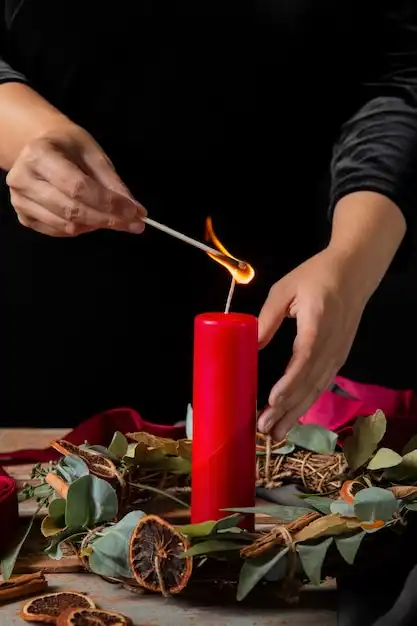Have you ever blown out your birthday candles, only to watch them mysteriously relight themselves? These magical moments are brought to you by trick candles! But how do these candles manage to light up again and again? Let’s dive into the science and find out the secrets behind trick candles.

What Are Trick Candles?
Trick candles, also known as magic candles, are special candles that relight themselves after being blown out. These candles are often used for pranks at birthday parties, causing endless fun as the birthday person keeps blowing them out, only to see them flicker back to life!

The Secret Ingredient: Magnesium
The magic behind trick candles lies in a special ingredient called magnesium. Magnesium is a metal that burns very brightly and at a high temperature. When the candle is lit, the flame melts the wax and ignites the magnesium powder sprinkled along the wick. This powder continues to burn even when the candle is blown out, igniting the candle wick again and making it appear as though the candle is magically relighting itself.

How Does It Work?
When you blow out a trick candle, the wick may stop burning, but the magnesium powder continues to glow. Here’s a step-by-step look at the process:
- Lighting the Candle: When you first light the candle, the flame melts the wax, which in turn soaks the wick with liquid wax.

- Magnesium Ignites: The heat from the flame also ignites the magnesium powder along the wick.

- Blowing Out the Candle: When you blow out the candle, the flame extinguishes, but the magnesium continues to glow because it burns at a lower temperature.

- Wick Relights: The heat from the glowing magnesium is enough to ignite the remaining wax vapour around the wick, causing the candle to relight.

Why Doesn’t the Magnesium Burn Out Completely?
You might wonder why the magnesium doesn’t just burn out completely the first time the candle is lit. The key is the distribution of the magnesium powder. It is mixed in small amounts with the candle wax and sprinkled along the wick, ensuring that there’s just enough to keep the candle relighting multiple times but not so much that it burns out too quickly.

The Role of Wax Vapour
When a candle burns, it doesn’t just burn the wick; it also burns the wax. The heat from the flame turns the wax into a vapour, which is what actually burns and keeps the flame going. In a trick candle, even after the flame is blown out, the heat from the magnesium is enough to turn some of the wax into vapour. This vapour can then catch fire from the heat of the glowing magnesium, relighting the candle.

A Fun and Safe Prank
While trick candles are a lot of fun, they’re also safe to use. The amount of magnesium in each candle is very small, so it doesn’t pose any danger. However, it’s always a good idea to use them under adult supervision, just like with any other candles.

The Science in Everyday Life
Understanding how trick candles work is a great way to see science in action in everyday life. It shows how even simple things, like blowing out a candle, involve fascinating scientific principles. Next time you see a trick candle, you’ll know all about the clever science that makes it work!

A Bit of History
Trick candles have been around for quite some time, and they’ve always been a hit at parties. The idea of a candle that can relight itself has fascinated people for years. Originally, they were a novelty item, but now you can find them in many stores, ready to bring a touch of magic to any birthday celebration.

Experiment at Home
If you’re interested in experimenting with candles and seeing this phenomenon for yourself, you can try a simple experiment at home (with adult supervision, of course). Light a regular candle and blow it out. Then, quickly bring a match close to the wick without touching it. You might see the candle relight itself! This happens because the wax vapour still lingers around the wick and can catch fire from the heat of the match.

Trick Candles and Chemistry
Trick candles are a fantastic example of how chemistry works in everyday objects. They demonstrate how different materials react to heat and how certain metals, like magnesium, can burn at lower temperatures than others. This principle is used in many other areas of science and industry, showing how a simple party trick can be connected to much larger scientific concepts.

Conclusion
So, the next time you see a trick candle, you can amaze your friends and family with your knowledge of the science behind it. You’ll know that it’s not magic, but rather the clever use of magnesium and wax vapour that makes these candles so special. Trick candles are a fun reminder of how exciting and surprising science can be, even in the smallest details of our lives.
For more interesting articles, please visit www.kidzherald.com





